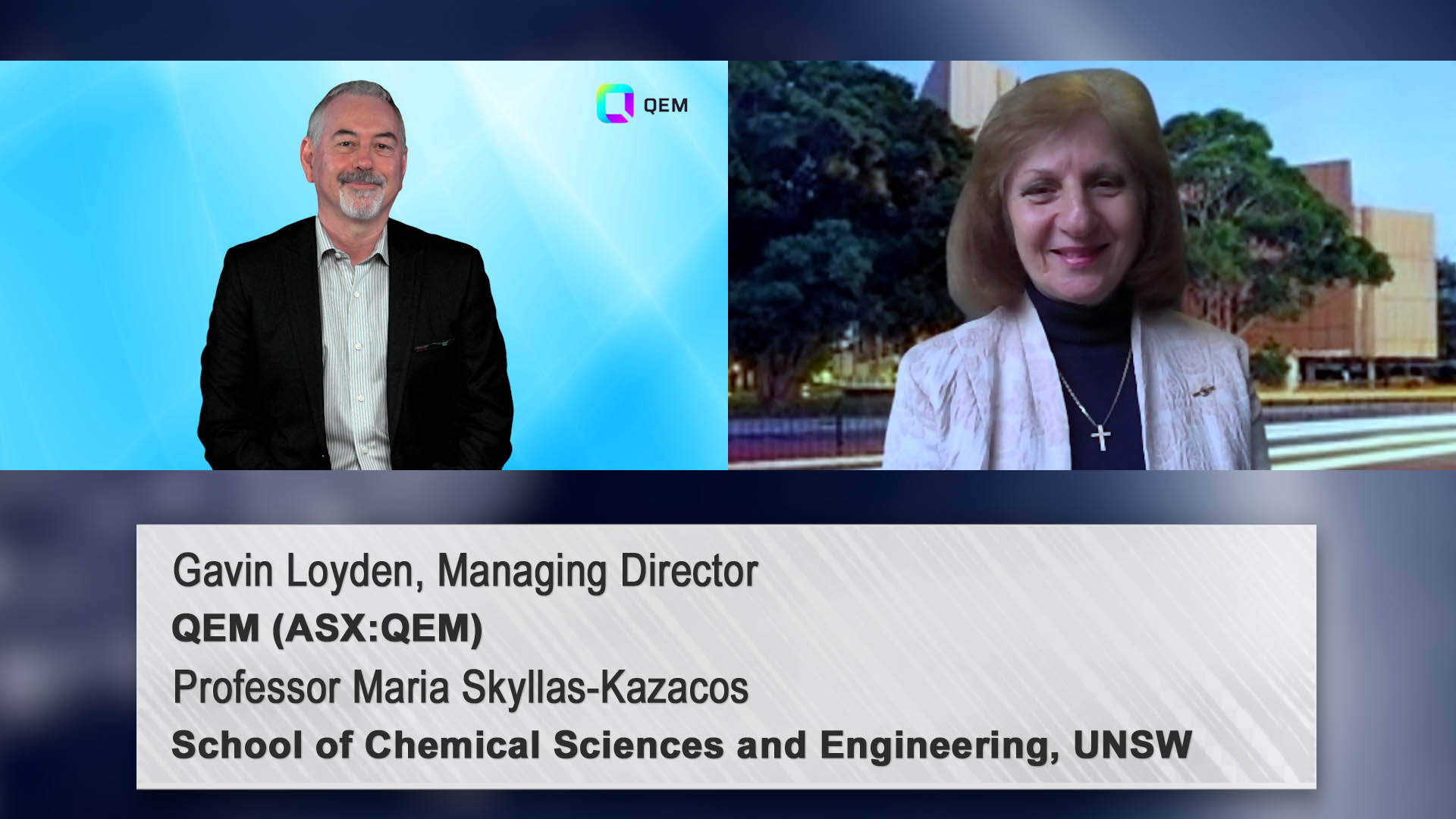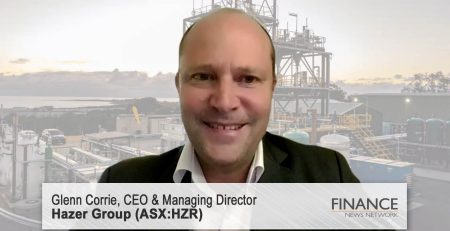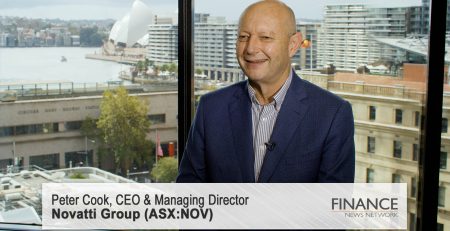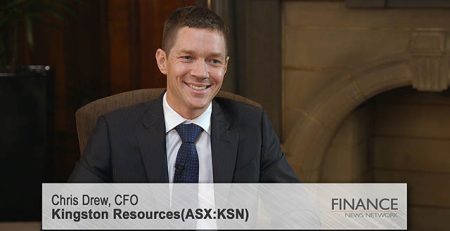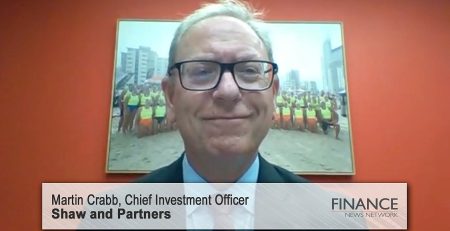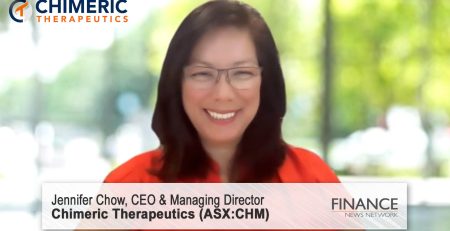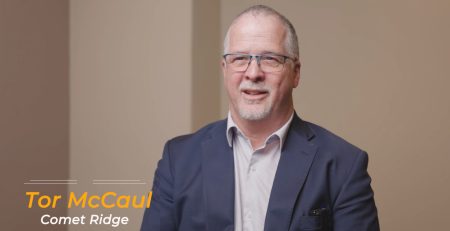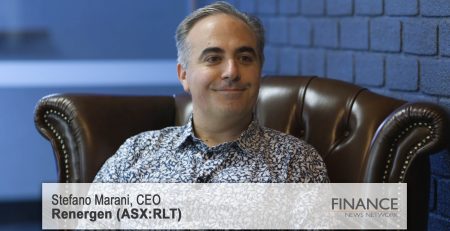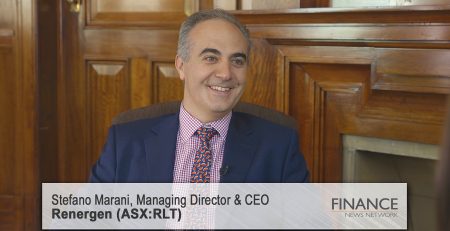QEM (ASX:QEM) explains rare-earth vanadium as alternative energy source
QEM Limited (ASX:QEM) Managing Director Gavin Loyden discusses the invention and advantages of vanadium redox flow batteries with Professor Maria Skyllas-Kazacos of the University of New South Wales.
Gavin Loyden: Gavin Loyden here, Managing Director of QEM Limited (ASX:QEM). QEM is involved in developing a vanadium and oil shale project in Julia Creek in North-West Queensland. And today I'm very honoured to be joined by Professor Maria Skyllas-Kazacos, the lady who invented the first vanadium redox flow battery here in Australia at the University of New South Wales in the '80s. Maria has been awarded a Member of the Order of Australia for services to science and technology, particularly in the field of development of this vanadium redox flow battery as an alternative power source. So, thanks very much for joining us, Maria. It's very much an honour and a pleasure to meet you. Maybe you'd like to give us a bit of a description on the VRB systems that you've developed over the years and where you see those going into the future.
Professor Maria Skyllas-Kazacos: Well, we started working on the vanadium battery back in the mid-1980s when we saw the work that NASA had been doing on flow batteries. But they were working on the iron chromium system. And very quickly we saw that the iron chromium suffers… And, first of all, a flow battery is like a battery, but it's also like a fuel cell. It includes two solutions, which contain either the same or two different elements which have a different potential. And as you pass those solutions through a cell stack, which is like the engine, the electrons get transferred from one side to the other. But there's a membrane in between that separates the two solutions. But if you have two different types of elements in the solutions on the positive and negative, the membrane can't keep them separated forever.
So, eventually they cross mix. And that was the problem with the iron chromium battery, this cross-contamination. So, we realised that the only way to overcome that was to use the same element in both half cells. So, one of my colleagues at the time had been working on processes to extract vanadium and process vanadium. So he said, "Oh, vanadium has got lots of oxidation states." And we also looked at the periodic table and we said, "OK, we'll start testing it." So, I had a student who was working with me at the time, and we tested just to check that it was soluble enough, and that's one of the critical things, that it has to be soluble, adequately soluble to give you energy density that you need. And it has to have a suitable potential difference to give you the voltage that you need.
So, after a few experiments, we found that it was viable to actually use vanadium in both half cells. And that sort of started off a 40-year program almost, I suppose –a 35-year program on the vanadium redox flow battery development, which, back in the 1990s was sort of… In fact even doing some field trials and demonstrations… We were working with one of our licensees in Thailand and we installed a vanadium battery in a solar house in Thailand. We then we issued a license to Mitsubishi Chemicals and Kashima-Kita Power Corporation. They were interested in the vanadium battery because they, at their power station, they were using Orimulsion, which is from Venezuela. And that contains a high level of vanadium. So they were looking at ways of processing and using that vanadium waste. And they thought that would be a perfect match that they extracted the waste from there, from the soot from their power station, and used that to produce electrolyte.
And they then, after a few years of working with us, and they previously had been working on the iron chromium battery, they switched across, and they put in the first 400 kilowatt hour vanadium battery at the power station. And then we also put in a vanadium battery into an electric golf cart. So, we did quite a few projects in the 1990s. And then the patents were sold to Pinnacle at the time. And it was after that, when the patents expired actually, then a lot of other companies started getting into the vanadium battery as well.
Gavin Loyden: Sure. And how do you see VRBs stacking up against lithium? Both in an energy density scenario and as well as longevity and safety?
Professor Maria Skyllas-Kazacos: Well, the energy density of the lithium battery is so much greater than any other battery, and that's why they've been used in electric cars. But one of the issues with lithium batteries is that they do suffer from serious safety issues. And recently there have been quite a few fires in some of the large energy storage systems. Whereas flow batteries and vanadium batteries especially are based on water. They don't have any flammable solvents. And so, so much safer than lithium batteries. And I think that's an important area that some people need to be aware of, especially with very large megawatt scale systems.
Gavin Loyden: Yes. And that seems to be the best place that they are suited for, right, is in grid support structures and offgrid solutions at scale?
Professor Maria Skyllas-Kazacos: Exactly. Especially for renewable energy storage, where you need to be able to store four, five, six, eight hours of energy so that you can then use it, for example, use it with solar energy at night-time, and then you can switch across to the energy stored in the batteries. For wind as well, when the wind's not blowing, then you can have at least six, seven, eight, ten hours of stored energy. And that's where, again, flow batteries are very important. Because energy's stored in solutions, you can independently vary the energy storage capacity, the energy to power ratio, you just adjust it by adjusting the volume of solutions. And that means that, especially, once you start to go above four hours of storage, because all you're doing is adding extra solution rather than extra batteries, the cost per kilowatt hour drops off dramatically. And so even though lithium batteries might be cheaper per kilowatt hour for small duration applications, up to two, three hours, once you get above four hours, then the cost is so much cheaper.
Gavin Loyden: And my understanding is that the vanadium batteries don't suffer from the same sort of degradation from the charging and recharging that other battery systems, particularly solid state battery systems, tend to suffer over time, and VRB can store that energy for quite a long period of time as well. Is that correct?
Professor Maria Skyllas-Kazacos: Exactly. Vanadium flow batteries have been shown to undergo hundreds of thousands of cycles. Sumitomo, for example, ran a field trial about 2005, where over a three-year period where they were doing the trial, the battery was subjected to over 200,000 cycles without any deterioration in performance. The electrolyte doesn't deteriorate. And so, even after 20, 30, 40 years, if you've finished one project, you can take that electrolyte and then put it into a different project or application. And that also brings up the possibility of, rather than selling the electrolyte as an upfront capital cost to users, a lot of people are thinking about maybe in fact just leasing it, because the electrolyte doesn't deteriorate. So, there have been a few companies that have already started working together to offer leasing arrangements of the electrolyte. And that brings the upfront capital cost even lower than otherwise it would be. And you also transfer the upfront capital cost into an operating cost as well, which is very advantageous.
Gavin Loyden: And in that lifecycle of the battery, there's no replacement issues. It's not like some of the other competing chemistries, where they have a limited life and then they've got a disposal issue, which is not the case here with vanadium.
Professor Maria Skyllas-Kazacos: Well, that's right. The electrolyte, because it doesn't deteriorate, you don't need to dispose of it. You just sell it on, or even you can extract the vanadium and then sell it even for different applications because the vanadium always retains its value. So, over the years, of course, different parts would deteriorate. You might need to replace a pump here or there, or sometimes individual stacks could be replaced, but that's only sort of small maintenance costs that you would expect with any sort of system, not just batteries here.
Gavin Loyden: It is an amazing element. It's so versatile in a number of spaces, but obviously this is an extremely important one and a timely one, I think, for Australia and for the world as we seek to decarbonise globally. So, where is the vanadium being sourced from currently for the battery systems, and where do you see that going into the future?
Professor Maria Skyllas-Kazacos: Well, obviously, that's the main concern that we've had for the last 10 years because most of the vanadium that's produced around the world is really targeting the steel industry. The production capacity isn't much greater than just the demand from the steel industry. So, as the demand for vanadium flow batteries is increasing, then there have been situations where the demand has been greater than supply, especially when China has been going through very rapid expansion and construction. And that's created instability in the price of vanadium. Which has been a concern for a lot of people who have been wanting to invest and to use vanadium batteries. So, that's why, for years now, I've been really trying to help to promote the importance of the vanadium battery and the importance of increasing our production capacity for vanadium. Because once we start producing more vanadium, then the supply will become stable, and the cost and the price will also stabilise. So, that's why I'm keen to see more production, especially here in Australia, because I mean, this is where we invented the battery and this is where we would like some returns to come back to the community as well, because they supported us for so many years and we want to see some manufacturing, some production happening here in Australia. And, of course, to use the vanadium battery, especially as we go more and more into renewable energy, because as we reduce our dependence on fossil fuels and we start to expand our generation of solar, wind and so on, that instability is going to cause enormous problems for the grid. So, we need to have more storage on the grid, and just a few batteries here and there is not adequate. If we're going to be going for large penetration of renewables, we need to have a lot of storage, and flow batteries really are the best solution for that mega gigawatt scale. And in fact, you're probably aware that in China they're installing an 800 megawatt hour vanadium battery in Dalian, which can supply up to 50,000 houses and will store energy from a large wind farm. So, that's the sort of scale that vanadium batteries can deliver and achieve.
Gavin Loyden: I know both the private sector and government have got very ambitious plans for energy storage in Australia. And, obviously, the production of vanadium from mineral sources is becoming more and more important. And we certainly hope that companies like ours at QEM will be able to support that going forward and get into production at the earliest possible time and support the industry. And, as you say, support resilience in the country and bring back manufacturing. This is an entire industry that can grow up around this sector. It just needs a little bit more of a prompt and a little bit more of a general education into the market, and hopefully we're here to help along those lines as well.
Professor Maria Skyllas-Kazacos: Well, I hope so. I hope so, because we've got a lot of vanadium. We can produce vanadium, we can produce a vanadium electrolyte, and then hopefully that will lead us towards to start producing batteries as well. And there's a whole industry around even the installation and maintenance and operation of these systems.
Gavin Loyden: Yeah, no, absolutely. And all congratulations to you for developing such a fantastic system. And it's come of its time. It may have taken a little while. I'm sure it feels like it's taking some while for yourself, but…
Professor Maria Skyllas-Kazacos: Well, I keep on saying, I keep on telling people that we were 25 years too early when we developed…
Gavin Loyden: It's often the case.
Professor Maria Skyllas-Kazacos: But at least the time has come now.
Gavin Loyden: The time is now. If any positives have come out of COVID, it's probably exposed our lack of resilience on a number of fronts, and this being one of them. And it's really sharpened the focus for all Australians, and particularly government, to refocus on actually producing things here in Australia and adding value. And that's what we're here to support as well.
Professor Maria Skyllas-Kazacos: Fantastic. Look forward to it.
Gavin Loyden: Thanks very much for your time, Maria.
Professor Maria Skyllas-Kazacos: My pleasure.
Gavin Loyden: Look forward to our next conversation. Thank you.
Professor Maria Skyllas-Kazacos: I look forward to it as well. Thank you.
Gavin Loyden: Wonderful. Thanks.
Ends
Copyright 2021 – Finance News Network
Source: Finance News Network

